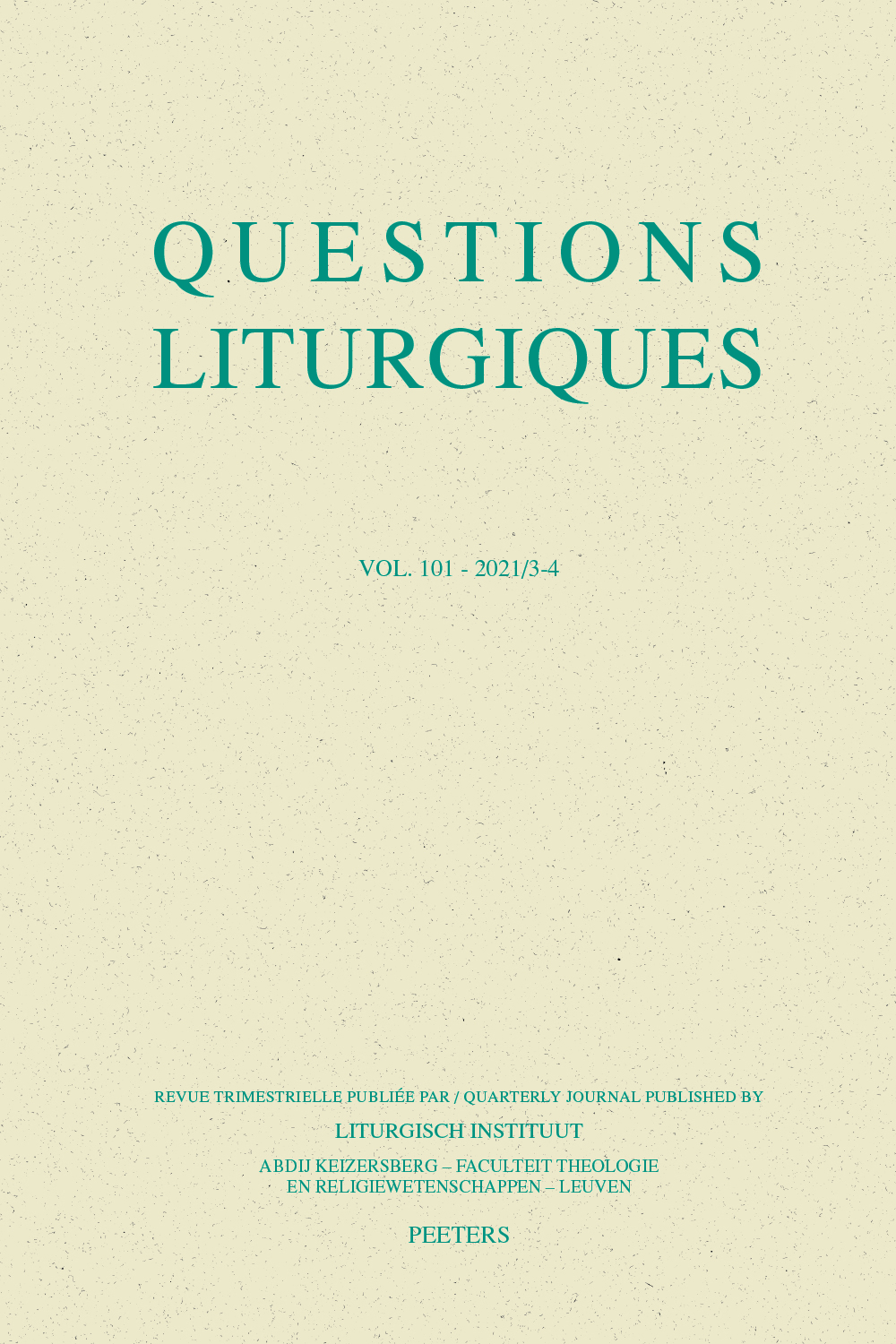 previous article in this issue previous article in this issue | next article in this issue  |

Preview first page |
Document Details : Title: 'The Work of Bees and of Your Servants' Hands' Subtitle: A 'New' Exsultet with Ancient Cosmic Imagery Author(s): WILBRICHT, Stephen S. Journal: Questions Liturgiques/Studies in Liturgy Volume: 93 Issue: 1-2 Date: 2012 Pages: 74-99 DOI: 10.2143/QL.93.1.2174118 Abstract : This article explores the historical development and the theological significance of the Exsultet, the hymn of joyful praise sung during the lucernarium of the annual Easter Vigil. The author first examines the hymn in terms of the gradual shift from a simple blessing of light, a symbol of Christ and a sign of God’s care, to the elaborate blessing and offering of the paschal candle itself. An example of the expansion of the meaning and purpose of the Exsultet, namely the controversial accretion of the 'eulogy of the bees', is described in the second portion of the article. The final section of the paper employs the new English translation (2010) of the hymn and argues that it restores valuable 'cosmic' images that were omitted in the previous translation (1970) and which remind the Church that the Easter Vigil, as well as all liturgy, celebrate a real union with God 'when things of heaven are wed to those of earth and divine to the human'. Cet article explore l’évolution historique et la signification théologique de l’Exultet, l’hymne de louange joyeuse chantée pendant le lucernaire de la Vigile annuelle de Pâques. L’auteur examine d’abord l’hymne en termes de passage progressif d’une simple bénédiction de la lumière, symbole du Christ et un signe de la sollicitude de Dieu, vers la bénédiction élaborée et l’offre du cierge pascal lui-même. Un exemple de l’expansion de la signification et du but de l’Exultet, à savoir l’accumulation controversée de l’éloge des abeilles, est décrit dans la deuxième partie de l’article. La dernière section du document utilise la nouvelle traduction anglaise (2010) de l’hymne et fait valoir qu’elle restaure des précieuses images «cosmiques» qui ont été omises dans la traduction précédente (1970) et qui rappelle à l’Église que la Vigile de Pâques, ainsi que toute liturgie, célèbre une union réelle avec Dieu «quand les choses du ciel épousent celles de la terre et le divin l’humain». |
|


